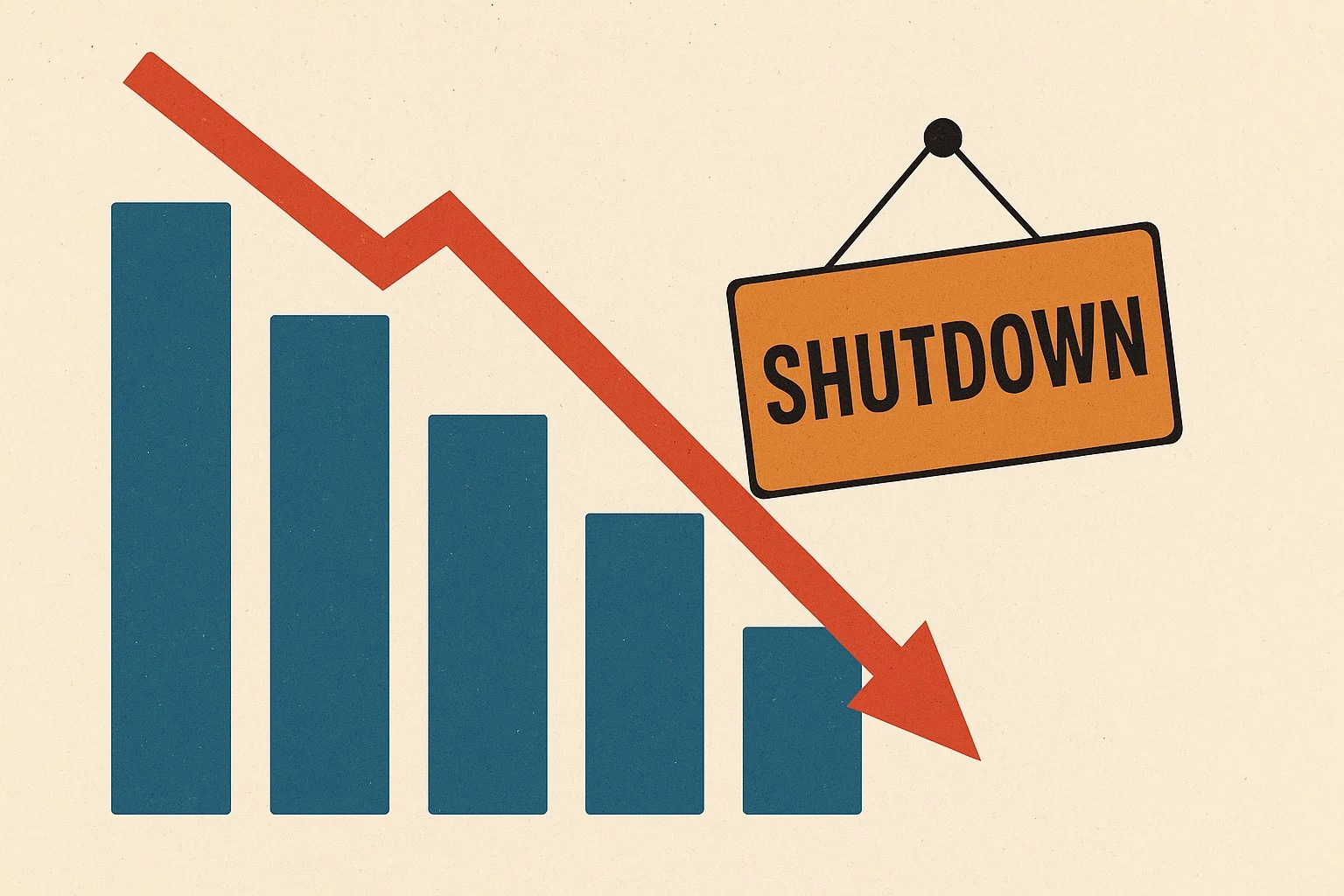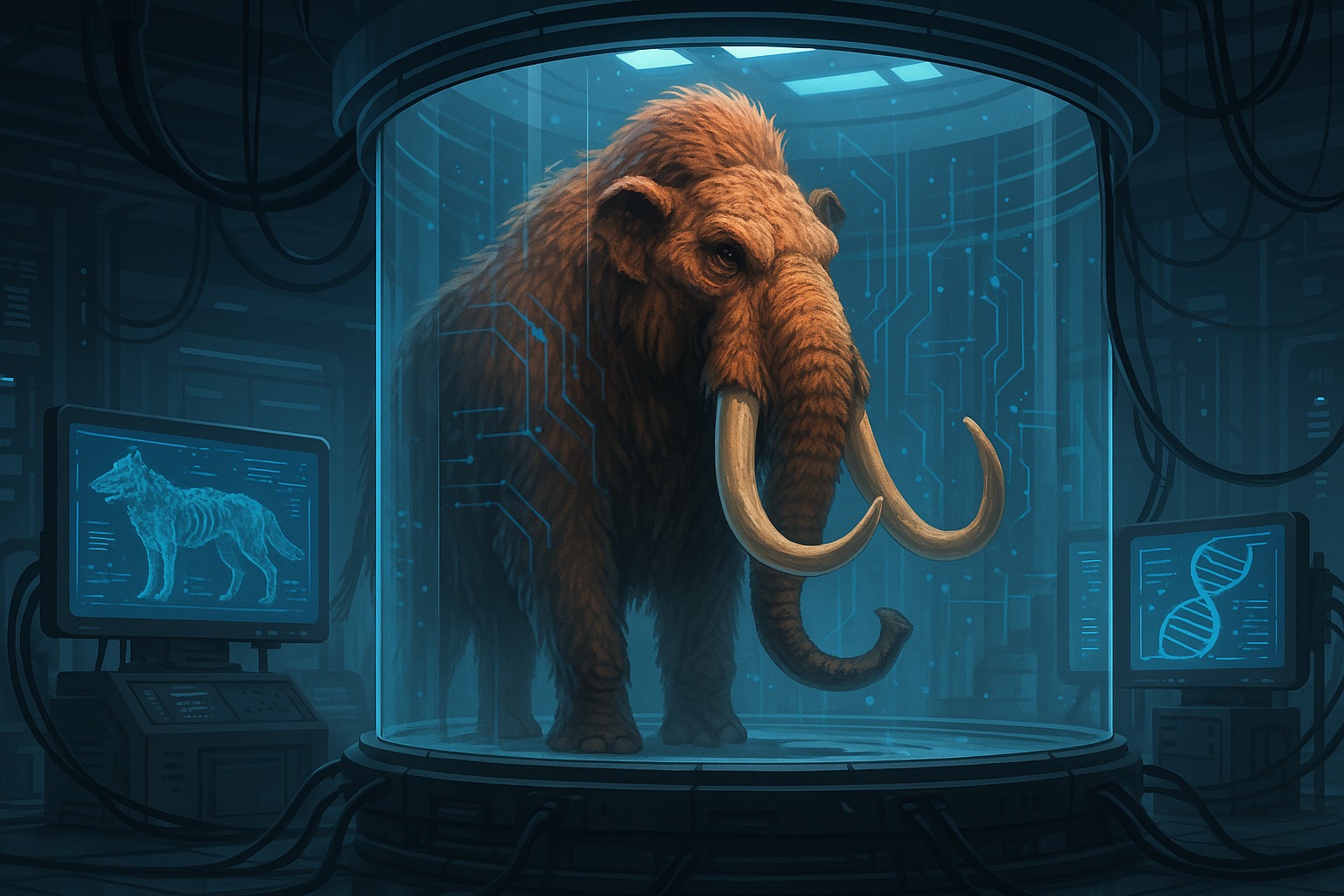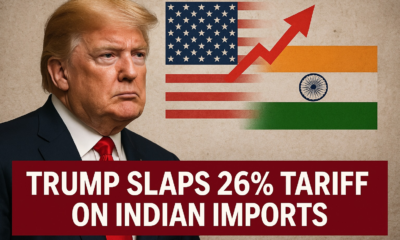Tech
OpenAI CEO Highlights India’s Rapid AI Adoption

Business
Over 28,000 Indian Startups Shut Down in Just Two Years — Is the Boom Turning Into a Bust?
Between 2023 and 2024, over 28,000 Indian startups shut down — a 12-fold increase from previous years. Here’s what triggered the closures and what it means for the startup ecosystem.

India’s startup ecosystem, long hailed as the world’s third-largest and fastest-growing, is witnessing a dramatic correction. According to data accessed from official records and industry estimates, over 28,000 startups have shut down between 2023 and 2024 — a number that dwarfs the 2,300 closures recorded across 2019 to 2022.
This marks a 12x increase in shutdowns over the previous period and reflects the tightening grip of a prolonged funding winter, unsustainable burn models, and macroeconomic headwinds that have hit India’s new-age businesses hard.
📉 Year-wise Startup Closures
| Year | Startups Closed |
|---|---|
| 2019–2022 (combined) | ~2,300 |
| 2023 | 15,921 |
| 2024 | 12,717 |
| 2025 (till April) | 259+ |
(Source: Financial Express, MCA records)
What’s Causing the Spike in Shutdowns?

Experts say the trend is a result of accumulated fragility in the system. Between 2020 and 2021, an avalanche of funding encouraged rapid expansion, but few startups focused on unit economics or real revenue models.
- Funding Slowdown: VC investments dropped by over 40% year-on-year after 2022, forcing cash-strapped startups to either pivot or perish.
- High Burn, Low Return: Business models in edtech, fintech, and quick commerce struggled to maintain customer retention and profitability.
- Regulatory Pushback: Segments like crypto, lending apps, and edtech saw increased oversight, creating compliance pressures many couldn’t absorb.
- Mass Layoffs & Consolidation: Over 24,000 layoffs were recorded in 2023 alone, as firms trimmed operations or merged for survival.
Notable Shutdowns
- Lido Learning: Once a rising edtech player, Lido shut operations in early 2022 due to a capital crunch.
- ZestMoney: A once-prominent BNPL fintech firm that folded in 2023 amid regulatory and operational challenges.
- Udayy: A pandemic-era live learning platform that exited the space in 2022.
- Anar: A B2B SME networking app that shuttered in 2023, citing scale limitations.
Even lesser-known startups in healthtech, crypto, and D2C struggled to maintain runway as customer acquisition costs surged and investor patience wore thin.
The Bright Side? A Market Correction
While the volume of closures is sobering, investors and analysts say the “cleanup” was overdue.
“This is a correction, not a collapse,” said a Bengaluru-based VC partner. “What we’re seeing now is a much-needed shift towards sustainable models, real value delivery, and lean operations.”
New startup launches also slowed in 2024 — with only 5,264 new ventures registered, compared to 9,600 annually during the pre-COVID years.
Conclusion
India’s startup dream is far from over — but it’s becoming more grounded. The age of free cash flow with no profits is ending, and the winners of the next decade will be those who combine ambition with accountability.
Business
Bringing Back the Extinct: The High Stakes Economics of De-Extinction
From woolly mammoths to dire wolves, scientists are getting closer to reviving extinct species. But as de-extinction moves from sci-fi to science labs, the real question is: what does it cost — and who pays the price?

In what sounds like a scene from Jurassic Park, biotech labs around the world are racing to bring extinct animals back to life — not in theory, but in practice. At the center of this movement is the concept of de-extinction, where genetic engineering is used to recreate species that disappeared from the planet centuries or even millennia ago.
Recently, researchers successfully created genetically modified wolf pups with DNA remarkably close to that of the long-extinct dire wolf — a prehistoric predator last seen over 10,000 years ago. This scientific feat is part of a much larger ambition to revive species like the woolly mammoth and the dodo, with hopes of reintroducing them into the wild.
But beyond the thrill of discovery lies a tough question: Can we afford to bring back the past?
The economics of de-extinction are complex. Creating and raising a genetically engineered animal isn’t cheap — the research, cloning, surrogacy, habitat preparation, and post-birth care can cost millions. While venture capital is flowing into biotech firms promising to resurrect the ancient, critics question whether this funding could be better spent protecting endangered species that are still alive — and in desperate need of conservation.
There are ethical dilemmas, too. The animals involved in surrogacy, the potential suffering of engineered species, and the risk of ecological imbalance all present moral gray areas. And what happens when an extinct species is reintroduced into an ecosystem that no longer resembles the one it once knew?
Then comes the business model. If de-extinction becomes a commercial service — part conservation, part spectacle — will it be driven by scientific integrity or by market demand? Will we have de-extinct animals housed in wildlife parks and exhibitions rather than roaming the wild?
Supporters argue that de-extinction could help restore lost biodiversity and even combat climate change, by rebalancing disrupted ecosystems. Critics warn it’s an expensive distraction from saving the living world.
In the end, de-extinction may be less about resurrection and more about reflection — a mirror held up to our choices as stewards of this planet. The science is catching up to imagination. Whether society is ready — financially, ethically, and environmentally — is still an open question.
Education
AI in Indian Classrooms: Transforming the Future of Learning
Artificial Intelligence is reshaping how Indian students learn and teachers teach. From AI teaching assistants to personalized learning tools, classrooms across India are evolving into smart, adaptive environments.

India’s classrooms are undergoing a quiet revolution — powered not by chalk and board, but by Artificial Intelligence (AI). As education embraces the digital era, AI is emerging as a powerful tool that is personalizing learning, improving accessibility, and redefining how students engage with content.Across schools and colleges in urban and rural India, AI is no longer just a buzzword — it’s becoming a daily reality.
One of the most promising innovations is the use of AI-powered teaching assistants. Take the example of Alice, a voice-activated AI bot developed by students at Bhubanananda Odisha School of Engineering. Alice can assist in answering scientific queries for up to six hours a day, pulling answers from large AI models like ChatGPT. Such tools are helping teachers manage large classrooms more effectively while giving students the freedom to explore learning at their own pace.
Meanwhile, edtech platforms like MindCraft and EdSaarthi are building AI-based personalized learning engines that adapt to a student’s level, strengths, and learning gaps — delivering content that is tailored, dynamic, and data-driven.
These innovations are not confined to elite institutions. With government initiatives like ‘AI for All’ and the AI Curriculum by CBSE, efforts are being made to integrate AI learning from as early as Class 8, making sure Indian students are not just AI consumers but future creators.
The impact is visible:Students in remote areas are now accessing AI-powered revision tools and doubt solversTeachers are using automated assessment tools to generate quizzes and analyze performanceSchools are experimenting with AI chatbots for career counseling and concept explanationInstitutions like Universal AI University in Maharashtra are going a step further — embedding AI as a core module across undergraduate and postgraduate programs.
Of course, challenges remain. Not every school has access to digital infrastructure. Concerns around data privacy, bias in algorithms, and teacher training need to be addressed. But the momentum is clear: AI is no longer a futuristic concept in Indian education — it’s the present.
As India moves toward a more inclusive and technologically enabled education system, AI offers a unique opportunity to bridge gaps, improve outcomes, and truly personalize learning for every student, everywhere.
-

 Uncategorized10 months ago
Uncategorized10 months agoRanveer Brar in conversation with Shantanu Prakash | Business Class
-

 Business4 weeks ago
Business4 weeks agoMedia in Meltdown: Inside the Financial Freefall of India’s Newsrooms
-

 Auto1 month ago
Auto1 month agoIndia’s EV Push Gets a Boost with New ₹5,000 Cr Government Incentive Scheme
-

 Business1 month ago
Business1 month agoIndia and U.S. Join Forces to Build Semiconductor Fabrication Hubs for Strategic Tech Leadership
-

 Business1 month ago
Business1 month ago‘Frankenstein’ Laptops Rise in Delhi’s Repair Markets as Budget Tech Finds New Life
-

 Business1 month ago
Business1 month agoTrump Slaps 26% Tariff on Indian Imports, Triggering Tensions in Indo-U.S. Trade Ties
-

 Education2 weeks ago
Education2 weeks agoNEET UG 2025 Admit Cards Released by NTA — Here’s How to Download
-

 Education1 month ago
Education1 month ago13 Deeksha Vedantu Students in Karnataka Top 10 Ranks






